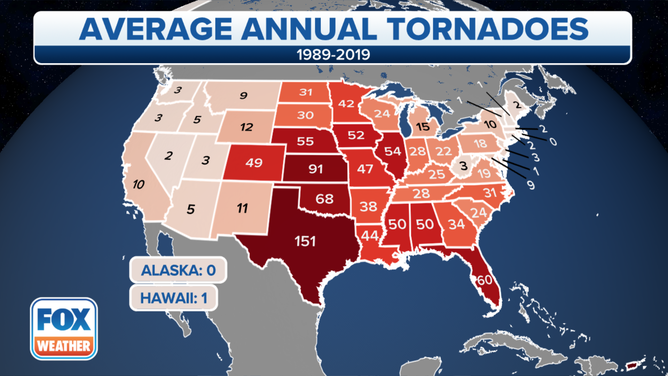See it: Utah landspout tornado catches onlookers by surprise
A landspout is technically a type of tornado but forms in a much different way than thunderstorm-based tornadoes. They are also far less powerful than a classic twister.
What is the difference between a Tornado Watch, Tornado Warning and Tornado Emergency?
During severe weather you'll likely hear the terms Tornado Watch, Tornado Warning, and even Tornado Emergency. But what do these terms mean and how should you react to them?
SALT LAKE CITY – Residents in northern Utah became concerned Thursday after spotting a cloud that looked as if a twister or funnel cloud had formed in the sky, but according to local meteorologists, the phenomenon was likely a landspout.
Spottings occurred just before noon local time southwest of Salt Lake City, near the Daybreak community.
The local National Weather Service office received several reports of the landspout, but there were no indications of damage as of Thursday afternoon.
A landspout is a type of tornado that forms much differently than the classic event that is often pictured impacting the nation’s heartland.
Landspouts occur when winds collide at the surface and form a vortex. The funnel then grows upward – the opposite of a tornado from a supercell thunderstorm that forms from a cumulonimbus cloud and works its way toward the surface.

Utah landspout catches onlookers by surprise on April, 25, 2024
(@AllisonKunz / FOX Weather)
WHAT’S THE DIFFERENCE BETWEEN A TORNADO, WATERSPOUT, LANDSPOUT AND DUST DEVIL?
Landspouts typically aren’t on the ground for long and are weaker than a typical tornado, but they can still produce damage.
According to the NWS, landspouts commonly form during the summer months in western states such as Wyoming, Colorado and New Mexico.
Due to their weak and brief nature, these weather events cannot be detected by techniques used to identify most tornadoes on radar.
Thursday’s isolated thunderstorms in Utah also produced reports of small hail and cloud-to-cloud lightning strikes.

The number in each state denotes its average number of tornadoes each year based on the period from 1989-2019. Data: NOAA/NCEI Storm Events Database.
(FOX Weather)
SONIC BOOM: HEAR THE SOUNDS OF A METEOR BREAKING UP OVER UTAH
If the event had been a classic tornado, it would have been an unusual occurrence.
According to historical data from the Storm Prediction Center, the Beehive State typically sees just three tornadoes annually. And they are usually weak.
According to the local NWS office, atmospheric conditions simply do not favor the formation of twisters in the dry, mountainous climate.
The state’s most destructive tornado occurred on Aug. 11, 1999, when an F-2 tornado tore through the Salt Lake City metro.
The tornado was reported to have killed one person and injured more than 80 others. At the time, damage was estimated to be $170 million.


